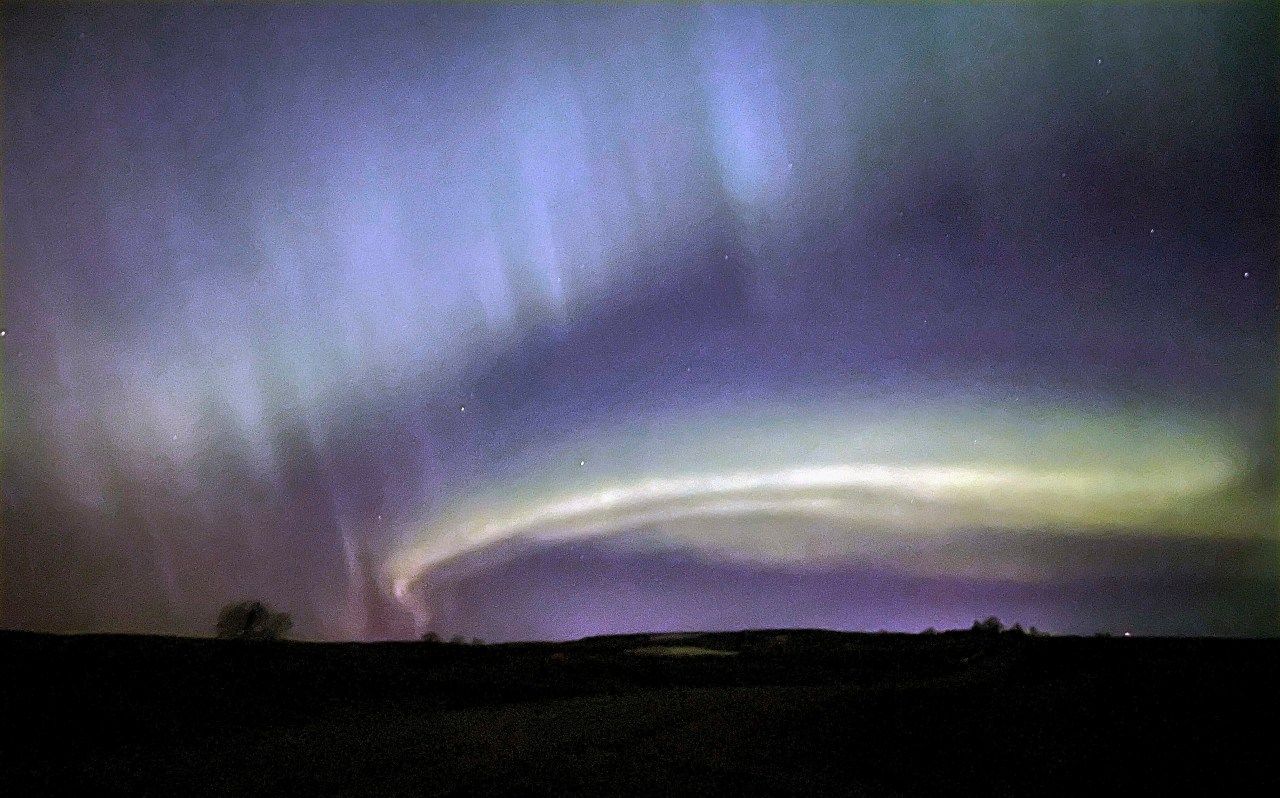Some US states could see northern lights again Sunday: Here’s where
(NEXSTAR) – A handful of states may again have the chance to see the northern lights, just a week after strong solar activity brought the auroras as far south as Alabama.
Last week, a coronal mass ejection and a minor solar flare sparked a geomagnetic storm watch and northern lights “visible as far south as Alabama and northern California,” the National Oceanic and Atmospheric Administration said.
Coronal mass ejections, or CMEs, are explosions of plasma and magnetic material from the Sun that can reach Earth in as little as 15 to 18 hours, NOAA explains. Slower CMEs, like the one behind last week’s activity, can take days to impact us.
While both solar flares and CMEs (which can occur at the same time) can impact navigation, communication and radio signals on Earth, CMEs are also able to create a stunning show in the night sky. According to NASA, CMEs can create currents in Earth’s magnetic fields that send particles to the North and South Poles. When those particles interact with oxygen and nitrogen, they can create auroras.
“When we see the glowing aurora, we are watching a billion individual collisions [between the particles and atoms and molecules], lighting up the magnetic field lines of Earth,” NASA writes.
After a filament eruption on the Sun Saturday, another CME could impact Earth, though not as strongly as last week’s episode.
As of Sunday afternoon, NOAA’s Space Weather Prediction Center is forecasting the northern lights could be visible in the far northern portion of the U.S., including parts of Washington, Montana, North Dakota, South Dakota, Minnesota, Wisconsin, Michigan, Maine, and slivers of Idaho and New York.
The aurora forecast for Sunday, April 30, 2023, as of 3:15 p.m. CT. (NOAA Space Weather Prediction Center)
The northern lights are best observed away from city lights, which can drown out the aurora.
This is just the latest round of northern lights that have been visible across the northern U.S. this year. It’s all thanks to the sun flipping its magnetic poles, an activity it does over an 11-year period.
“We’re right in the middle of that transition right now, we’re approaching it. When we hit the middle we call it solar maximum. It’s when we have the most sunspots, it’s when we get the most solar flares and eruptions,” Bill Murtagh, the Program Coordinator for NOAA’s Space Weather Prediction Center, told Nexstar’s WROC.
CMEs are often seen during this process, which have contributed to recent auroras. The stronger those CMEs are, Murtagh explains, the further south the northern lights are visible.
If you missed the northern lights last week, and won’t see them Sunday night, don’t worry – according to Murtagh, we’re building up to “the solar maximum.”
“We’re expecting it to occur between 2024-25 so essentially stay tuned, there’s more to come.”
Source: NewsNation Now


